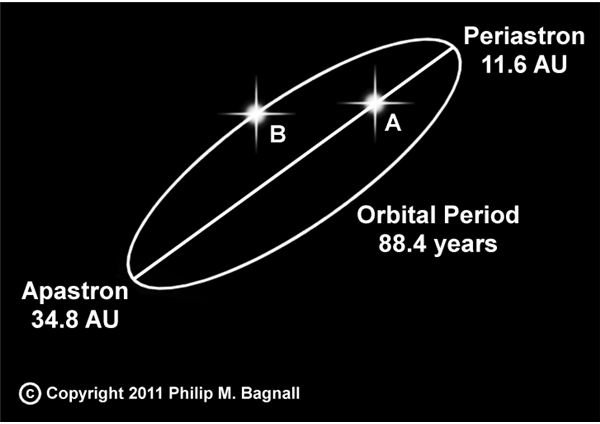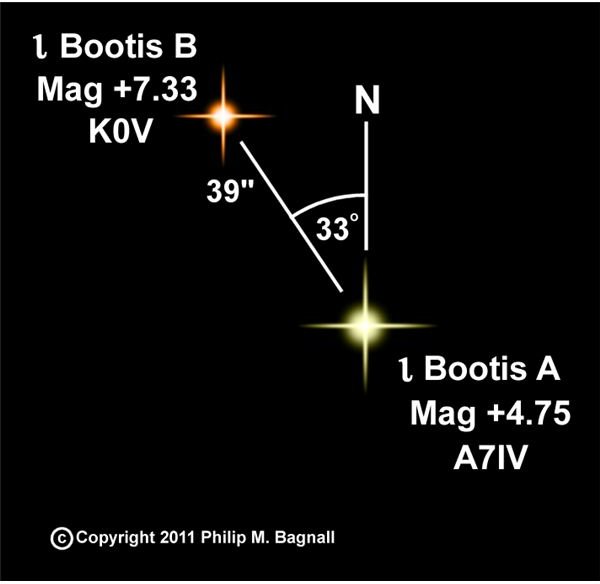DIY Binocular Astronomy Projects: Seeing Stars is Easier Than You Think
Why Binoculars?
Apart from the cost, binoculars are lighter and more versatile than a telescope. Unless you go for the bigger binoculars – we’ll come to size in a moment – you will usually be able to hand hold them, which means you can move around the sky more easily. Generally the view from a binocular is crisper and appears to have more depth than that seen through a telescope, mainly because you are using both eyes.
Why Double Stars?
There are two types of double stars: those that are in orbit around one another (referred to as binary systems) and those that are a line-of-sight coincidence. It is usually impossible to tell them apart except that over many years the binary pair will appear to move relative to one another. Once you have looked at several binaries you will have your favorites – observers nearly always do – and you’ll probably want to know more about them. Like, why are they different colors? Are they the same size? How far apart are they? How long does it take for them to orbit one another? How do you measure their separation and movement? All these questions have answers and those answers will help you better understand how the galaxy works and how we measure it. Double stars are a great introduction to astronomy, as well as your first binocular astronomy project.
Choosing Binoculars
You can spend hundreds of dollars, even thousands on binoculars, but you don’t have to. Binoculars do not usually wear out, so you can pick up a decent pair on eBay for next to nothing. Even buying new you could pay as little as $40. So here’s what to look for.
Binoculars are often described as being, for example, 8 x 30. The first number is the magnification: it tells you that what you are looking at will appear eight times closer. The higher the magnification the easier it is to separate stars that are very close together. The second figure is the diameter of the lens in millimeters. The bigger the lens, the more light it will catch. However, bigger lenses tend to need bigger tubes to hold them and the binocular can become so heavy that it is not easy to hold.
A good binocular for observing double stars is a 7 x 50 or a 10 x 50. If you can, try out the binocular before you buy. Focus the binocular on a bright surface, say a building in daylight, and look along the edge of the building. If you see a colored edge then reject the binoculars. Try to find “fully coated”, “multi-coated” or “fully multi-coated” lenses. These coatings help to reduce unwanted reflections. Also check the eyepieces. At least one of the eyepieces should turn to allow you to focus the binocular more precisely.
Focusing Binoculars
Everyone knows that you focus a binocular by turning the knurled shaft between the two tubes. The cheapest binoculars have only this type of focusing. The problem is that most people’s eyes do not focus on exactly the same point – one eye will focus at a point slightly short of the other eye - so it is best to choose a binocular where one of the eyepieces can be adjusted to compensate for this problem. It is often the right eyepiece that is adjustable. Here’s how you focus the binocular.
Look at a distant object: a brick wall is a good target. Close your right eye (better still, cover the right lens on the binocular) and use the central focus to produce a sharp image. Next, close your left eye (or cover the left lens) – don’t forget to open your right eye! - and turn the right eyepiece until the image is pin sharp. Do not touch the central focus. Remove the lens cover and your binocular should be perfectly focused. Providing you do not move the adjustable eyepiece you will only need to focus the binoculars in future by using the central focusing shaft.
Choosing Double Stars
So, equipped with your binoculars which double stars are you going to hunt down first? Well, that depends on the time of year, your latitude and where you live. If you reside in the suburbs then light pollution will limit the faintest star you can see to about magnitude +8. Without a binocular you will probably only see to magnitude +5. There are several lists of double stars on the Internet but one of the best can be found in our first reference (see below). Why is this such a good list? Well, if you have purchased a 10 x 50 binocular then the closest separation you will be able to resolve between two stars will be about 40 arc seconds, if they are of equal brightness or magnitude. Most of the stars in this list are wider apart than 40 arc seconds and are brighter than magnitude +8, so they are ideal targets for a 10 x 50 binocular.
Select you target stars from the list then track them down using a star chart. If you do not know which constellations are visible tonight then you should buy one of the popular astronomical magazines, such as Sky & Telescope or Astronomy. Both contain charts for the current month. You may also like to look up the star using Wikisky to get some idea of what you are going to see.
What to Record
Okay, so now you’ve found your double star, what exactly are you looking at? And what should you record?
Perhaps the first thing to note is the color of the two stars. It is not uncommon for observers to disagree on color. This can be due to a number of factors, such as your color vision, the quality of your binoculars, the contrast between the two stars, their magnitudes, how high they are above the horizon, how clear the sky is and even the time of night or the time of year. Do not be surprised to find that when you return to look at a double at a later date then one or both stars appear to have changed color. If you want to know what color they should appear as then visit the Alcyone website and enter the name of the star. When the results come up click into “The Washington Double Star Catalog 1996”. If you do this for, say, Iota Bootis then it will tell you that the stars’ spectral groups are A7IV and K0V. The A7 means that one of the stars should appear yellowish, while the K0 means the other star should be yellowish-orange. The color sequence is:
O: Blue
B: Blue to bluish-white
A: Bluish-white to pale yellow
F: Pale yellow to yellow
G: Yellow to yellowish-orange
K: Yellowish-orange to reddish-orange
M: Reddish-orange to deep red
Next you should note the Position Angle or PA. The PA is centered on the brightest star. The angle of the faintest star is measured counter-clockwise from due north. So a star that has a PA of 90 degrees is the fainter star that is directly to the left of the brighter star. If it had a PA of 180 degrees then it would be due south, and 270 degrees would put it directly to the right. The Alcyone website will give you some idea of the PA and how it has changed over the years.
With practice you will become familiar with the angles. A little more tricky is the separation of the two stars. Again, Alcyone will help, as will a good star atlas such as Norton’s.
Now, how about testing your binoculars to see how good they really are? As we previously said, with a 10 x 50 you should be able to separate stars that are 40 arc seconds apart. So why not see if you can separate something a little closer, such as Lambda Arietis at just 37 arc seconds?
Double Stars in Depth

Having whet your appetite you probably want to know something about the stars you are looking at. Apart from Alcyone you could try visiting VizieR which has a massive database that will tell you how big the stars are, their distances, movement and so on. Alternatively, my own The Star Atlas Companion will give you a better idea of the physical properties of double, multiple and single star systems.
Apart from double stars there are also triple and other multiple star arrangements, all of which have their own characteristics and often chaotic histories.
Did You Know…
…that some stars are so close together that they distort one another into tear drop shapes? Or that some stars feed off their neighbor like some sort of cosmic cannibal?
References
Binocular Doubles https://www.carbonar.es/s33/binodoubles/Binodoubles.html
Alcyone https://www.alcyone-ephemeris.info/search_in_bsc.html
Norton’s Star Atlas. Edited by Ian Ridpath and published by Dutton.
The Star Atlas Companion by Philip M. Bagnall. Published by Springer Praxis in March 2012.
VizieR database https://vizier.u-strasbg.fr/
